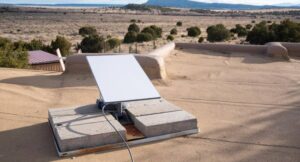TV Today Network, a part of the India Today Group, announced that it was selling its radio business for ₹20 crore to Creative Channel Advertising and Marketing Pvt. Ltd (Creative Channel).
The company’s Special Committee of Directors greenlit the proposal for signing a Memorandum of Understanding (MoU) with Creative Channel for the sale of its FM radio broadcasting operations, including three FM radio stations in Mumbai, Delhi and Kolkata under the frequency 104.8 FM, it said a regulatory filing dated Wednesday, February 26.
TV Today Network will receive ₹20 crore plus applicable taxes on the sale of its Radio business. Creative Channel will pay ₹10 crore along with taxes once the MoU has been signed and the remaining ₹10 crore on the closing date, following regulatory approvals.
The sale is expected to be completed on or before January 31, 2026, as per the filing.
Loss-making radio business
TV Today first announced it was shutting down its radio business on January 9, 2025, in a regulatory filing, stating, “Given the state of the industry, its dynamics and evolution of FM Radio Broadcasting business, the Board of Directors considered it in the better interest of the Company to close this business instead of continuing the same.”
The radio channel, branded ‘Ishq 104.8 FM’, reported a loss of ₹19.53 crore in FY 2023-24 and made no contribution to TV Today’s net worth. However, with a turnover of ₹16.18 crore, it contributed 1.70% to the media house’s total turnover in FY’24.
The buyer Creative Channels is engaged in the business of television broadcast, advertising and programming activities.
TV Today Network Q3 results
TV Today Network’s consolidated net profit fell 70.12% year-on-year to ₹8.7 crore in Q3 of FY 2024-25, compared to ₹29.12 crore in the corresponding period last year.
Its revenue from operations stood at ₹236.76 crore in Q3FY’25, tumbling 9.87% YoY from ₹262.69 crore in Q3 of FY 2023-24.
TV Today Network closed in red at ₹160, down 1.05% on the National Stock Exchange (NSE) on Tuesday, February 25.
It has a total market capitalisation of ₹954.70 crore as of February 26, on the NSE. Upstox









